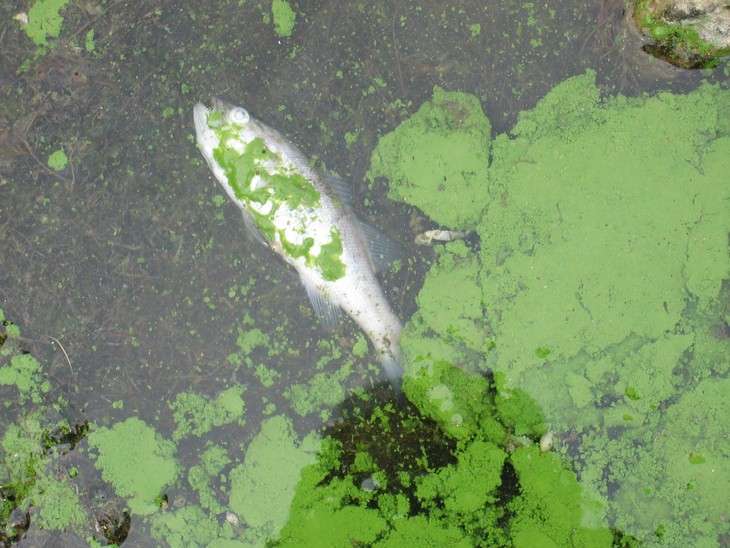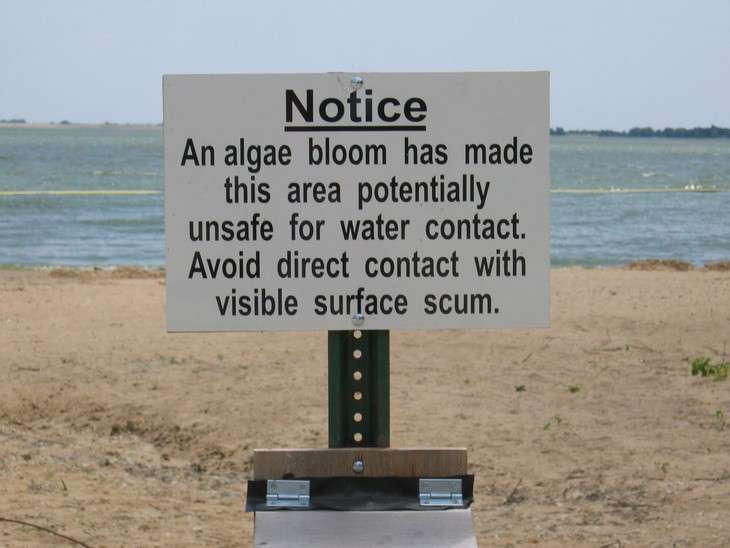Project to reduce risk of harmful algal blooms in ponds and lakes

A new project to help identify and remediate harmful algal blooms could make Pennsylvania ponds and lakes safer for people and animals.
With a grant from the Penn State-based Pennsylvania Water Resources Research Center, Penn State Extension will develop a network of county-based extension educators trained in the identification of harmful algal blooms. These educators will collect data to help determine the abundance and geographic distribution of these blooms.
They also will conduct workshops and other outreach activities to educate and assist pond and lake owners. At some events, including Penn State's Ag Progress Days in August, Penn State Extension will offer to test algae samples brought in by attendees.
Awareness of harmful algal blooms was heightened in 2014 when a well-publicized occurrence in Lake Erie near Toledo, Ohio, prompted the city to restrict water use for its 500,000 water customers. While various agencies already monitor for harmful algal blooms in the Great Lakes and other large bodies of water, little attention has been paid to such blooms in smaller inland waters.
Pennsylvania is home to thousands of these natural and man-made ponds and lakes, according to project leader Bryan Swistock, water resources senior extension associate in the College of Agricultural Sciences. But he noted that no known research is available on the prevalence of harmful algal blooms in Keystone State waters.

"Various species of toxin-producing algae were confirmed in a small number of samples submitted to Penn State Extension in 2014, but little is known about their overall abundance," Swistock said.
"Past surveys of pond and lake owners have revealed that more than three-fourths of these bodies of water had management problems, and more than half had nuisance levels of aquatic plants and/or algae," he said. "In addition, Pennsylvania Fish and Boat Commission data on aquatic herbicide use suggest that algae is a major problem, since four of the top five herbicides used are algaecides."
While most forms of pond and lake algae are harmless, certain types of blue-green algae consist of cyanobacteria, which produce toxins that can cause injury or death to domestic animals, fish, wildlife or humans who interact with the water.
"Cyanobacteria produce more than 80 toxins that can cause noxious odors, kill aquatic life, produce skin irritation and cause gastrointestinal illnesses," Swistock said. "This could make a pond or lake unsuitable for things such as fishing, swimming, irrigation or animal consumption—all of which are very common uses in Pennsylvania."

He explained that harmful algae blooms are most common during July, August and September in Pennsylvania. "Pond and lake owners should watch for common symptoms of these blooms, including discolored pond water that suddenly looks green, blue-green, black, white, purple, brown or red. Algae blooms also often appear as a film, crust, dots or puff balls, or they look like grass clippings floating on the water."
Many blooms also resemble spilled paint or pea soup on top of the water. Swistock warned that if any of these symptoms are noticed in a pond or lake, pets, livestock and people should not enter the water until the algae can be identified.
Pond owners who think they might have a problem with harmful algal blooms can bring a sample to the Crops, Soils and Conservation area at Penn State's Ag Progress Days, Aug. 18-20, for free identification by trained Penn State Extension water resources educators. To avoid contact with potential irritants from these algae, pond owners should wear plastic gloves when collecting samples.
Swistock said samples should be kept on ice during transport to Ag Progress Days, which is held at the Russell E. Larson Agricultural Research Center, on state Route 45 nine miles southwest of State College. To aid in identification, he said, it also is helpful to have two photographs of the algae bloom, one from a distance and one within 2 feet of the pond surface. Pond owners who are found to have potentially harmful algae blooms will receive information on how to manage and control algae growth.
More information: More information on harmful algae blooms is available on the Pennsylvania Sea Grant website: www.paseagrant.org/be-aware-harmful-algal-blooms/
Provided by Pennsylvania State University
















